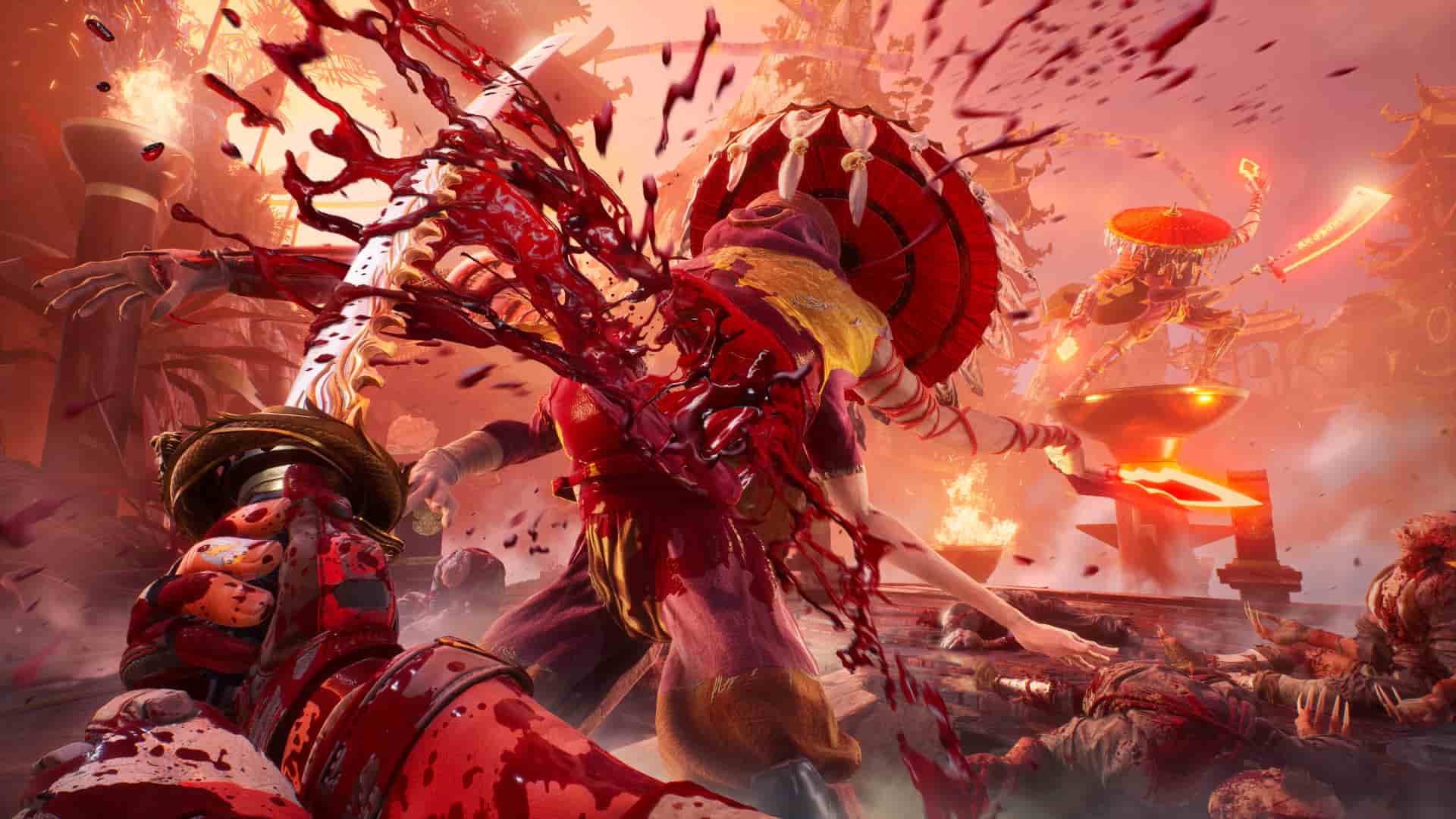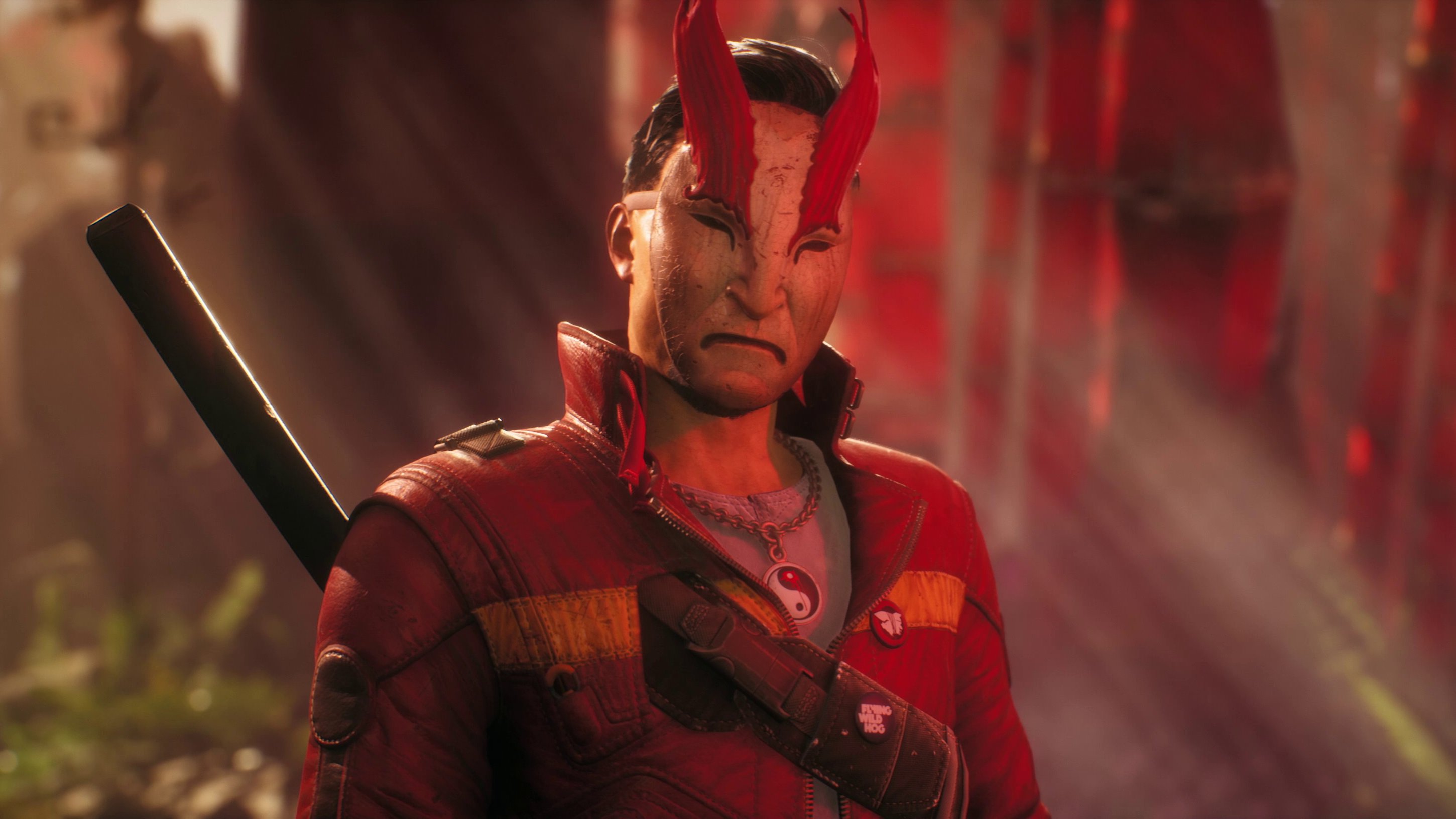

Much of UE4's finery seemed perfectly achievable in the older, existing engine. In fact, the second game still holds up beautifully, with the Road Hog engine firing on all cylinders. The thing is, after playing Shadow Warrior 3 are refreshing myself with the first two games, I'm not seeing the same colossal leap in graphical quality that there was between the first two titles. It's also curious how the game starts with a visually disappointing stage: it's only when you reach that second level that you understand that Flying Wild Hog is still capable of producing a great-looking game - and where UE4's advanced rendering features get a workout. To illustrate the extent of this issue, I counted 14 minutes of pre-rendered video sequences in my first 50 minutes of play. That starts with the move away from real-time engine-generated cinematics to low frame-rate, low quality video, which often interrupt the flow of the game as they used mid-level to introduce new areas, characters and enemy mechanics. While Flying Wild Hog's transition from an art perspective is generally well accomplished, other technical elements fall short.

It's a different take on Shadow Warrior, but the move from the Road Hog engine to Unreal isn't as smooth as it should be - literally. The focus on fewer weapons works as they're all satisfying to use, while the enemy design is also worthy of praise.

Ultimately, we're looking at tunnel-like movement from arena to arena, but the design is great and the combat itself is very well designed. These paths then end up in typically circular battle arenas, where enemies spawn in waves and progress is achieved by vanquishing them all. Essentially, a level is an A to B path where you engage in first person platforming with very light combat in a corridor style where you have very distinct paths that you can traverse through very quickly. Perhaps this is to make it work better on a controller with less inputs, but at the same time, these changes also work hand-in-hand with the game's entirely different combat beat, which seems now heavily inspired by the recent Doom games. Shadow Warrior 3 switches things up still further: shooting and swordplay are radically simplified (two attacks and no parry), with fewer weapons but more focus on those weapons.
SHADOW WARRIOR 3 PRO
Watch on YouTube Alex Battaglia's technical review of Shadow Warrior 3, as tested on PC, PS4 Pro and the back-compat plus PS5 rendition. Shadow Warrior 2 may have looked gorgeous, but the base gameplay was marred by turning most of the objectives into something you might find in Borderlands. Shadow Warrior 2 was a different beast: the base shooting and swordplay improved and the Road Hog engine delivered impressive visuals, but level design and engagement in most of the game took a step back in quality, owing to levels built around tile-based randomisation, Diablo-style. The changes to gameplay are worth focusing on to begin with: Shadow Warrior's 2013 reboot was a fast-paced classic FPS, filled with health drops and secret locations - but with a surprisingly well crafted story and characters you could really care about. Meanwhile, the lack of native current-gen versions of the game is a genuine disappointment - owners of new consoles essentially get accelerated versions of the last-gen game, missing key visual features. The impressive Road Hog engine takes a backseat this time to Unreal Engine 4 - a controversial decision that doesn't quite pay off. Protagonist Lo Wang's voice is different, the gameplay itself has evolved and crucially - from a Digital Foundry perspective, at least - the engine technology powering the experience has moved on.
SHADOW WARRIOR 3 SERIES
Nine years on from Flying Wild Hog Studios' first reboot of the Shadow Warrior franchise, it's all change with the third series entry.


 0 kommentar(er)
0 kommentar(er)
